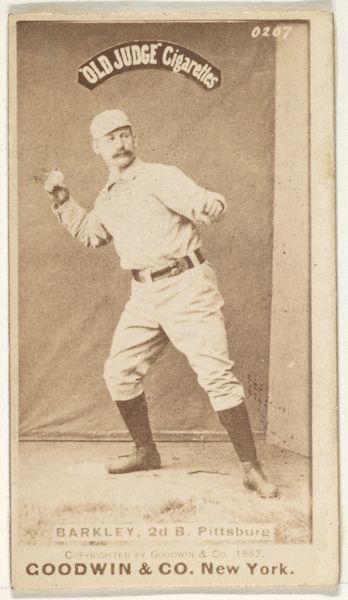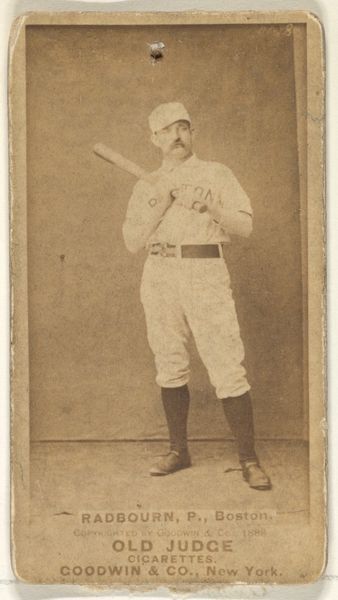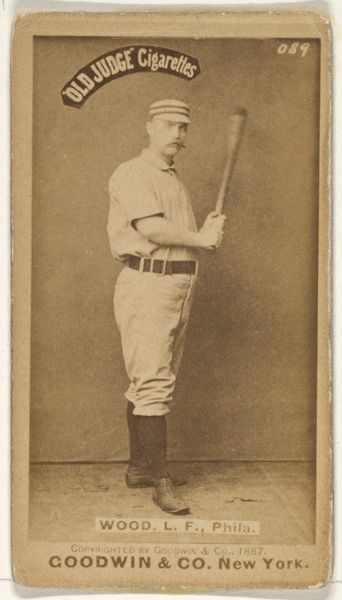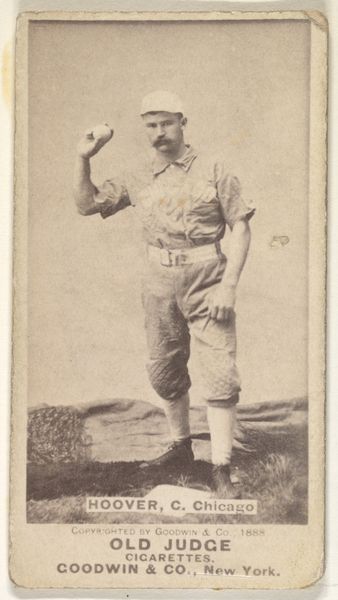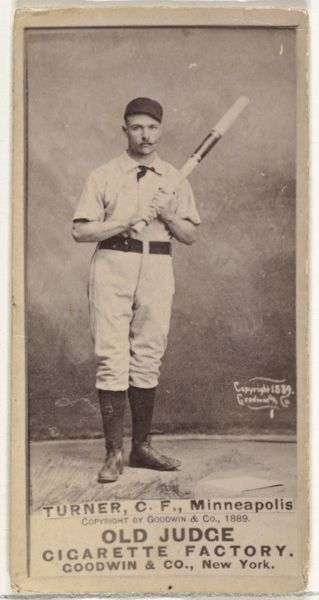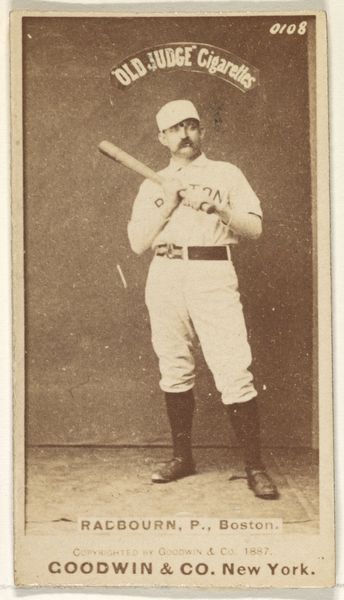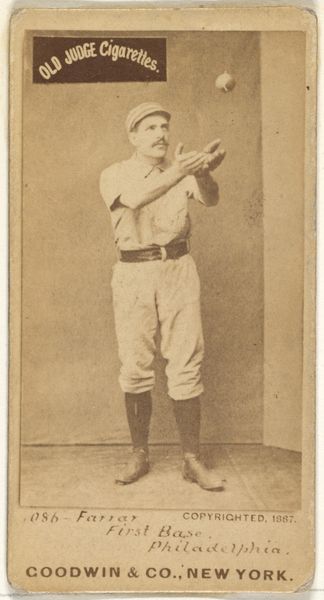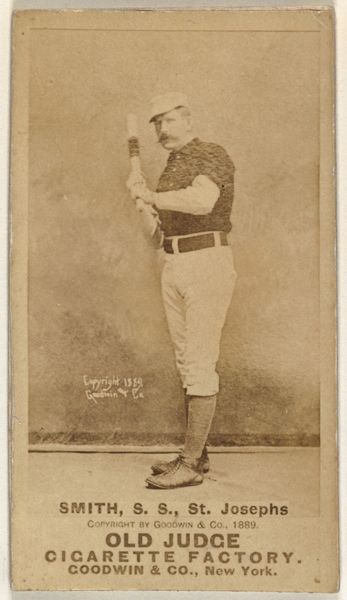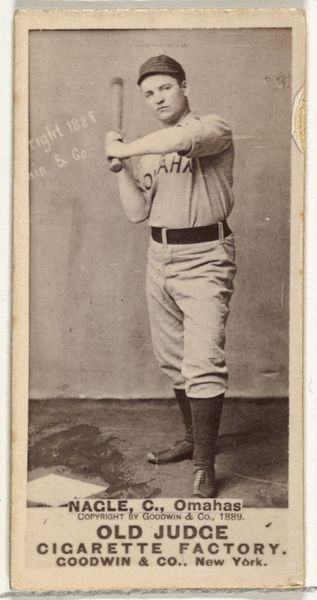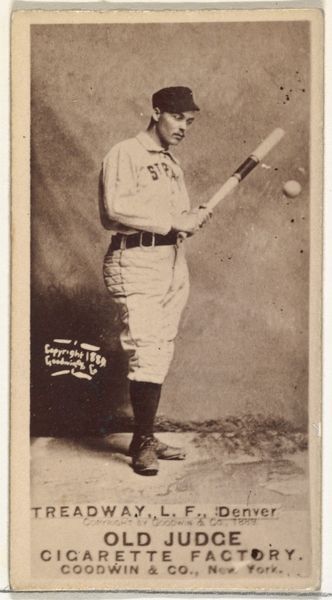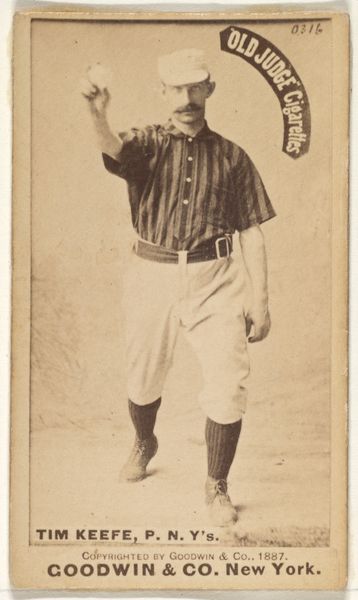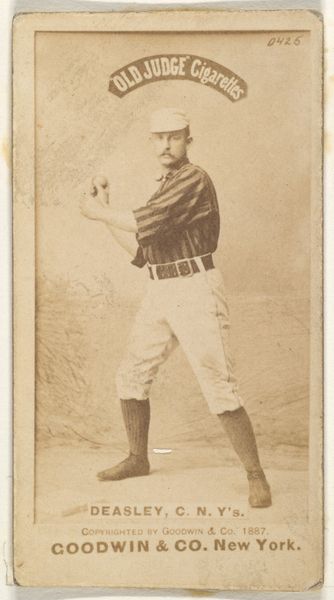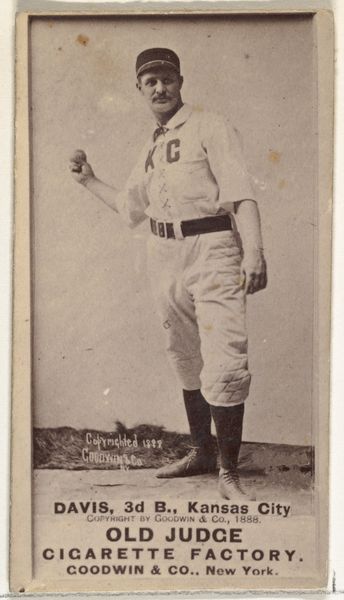
Milton Douglas "Buck" West, 1st Base, Minneapolis, from the Old Judge series (N172) for Old Judge Cigarettes 1889
0:00
0:00
print, photography, gelatin-silver-print
#
portrait
#
print photography
# print
#
baseball
#
photography
#
historical photography
#
gelatin-silver-print
#
athlete
Dimensions: sheet: 2 11/16 x 1 3/8 in. (6.9 x 3.5 cm)
Copyright: Public Domain
Editor: This is a print titled "Milton Douglas 'Buck' West, 1st Base, Minneapolis," from the Old Judge series for Old Judge Cigarettes, made by Goodwin & Company in 1889. It looks like a photograph, actually a gelatin silver print. The figure is stark, almost like a statue. What can you tell me about this portrait? Curator: It’s fascinating to consider this within its historical context. This image isn’t just a photograph of a baseball player; it's also a commodity intrinsically linked to tobacco advertising. Consider the power dynamics at play. Here you have a depiction of athleticism, virility, printed to sell cigarettes, a product often linked to exploitation of labor and public health concerns. Editor: That makes me consider this work very differently. The figure appears timeless, but the connection with a specific cigarette brand firmly plants it in a historical context. So how does this intersect with larger narratives? Curator: Think about the early professionalization of sports and the construction of celebrity. These cards weren’t just about baseball; they were about creating role models, projecting ideals of masculinity. But who had access to those ideals? Whose stories were being told, and whose were being excluded? This image, though seemingly simple, reflects complex issues of class, race, and the marketing of identity. Consider how this format echoes and perhaps informs later trading cards and the hero worship surrounding athletes, and think of who is profiting, who is elevated, and who is rendered invisible. Editor: It’s surprising how much depth lies beneath this seemingly simple image. I didn't even think of it as a means of communicating the values of society, or a product of its historical conflicts and social complexities. Curator: Exactly! This is why engaging with art history critically—through the lens of gender, race, class, and other intersections—can reveal so much about ourselves and the world we inhabit. Editor: I’ll never look at baseball cards the same way again. Thanks for sharing your perspective!
Comments
No comments
Be the first to comment and join the conversation on the ultimate creative platform.
